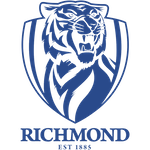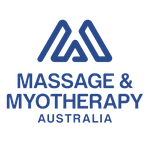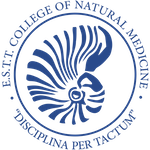TREATMENT MODALITIES
Myofascial Release Therapy
Trigger Point Dry Needling
Lymphatic Drainage Massage
Sports Massage Therapy
Muscle Energy Technique
Trigger Point Therapy
As a professional for over 29 years, Pablo has attained a number of 'tools' into his toolkit and the following modalities make up the core of his work:
Myofascial Release Therapy
Myo means, “muscle.” Myo-fascial refers to both muscle and fascia. Myofascial release affects the whole body and is aimed at releasing tension in the fascia, which restores balance to the body and its systems.
Fascia is connective tissue that surrounds, connects and separates the muscles, bones, and internal organs. It provides the body with strength, support and it provides the body with strength, support and…
Fascia is connective tissue that surrounds, connects and separates the muscles, bones, and internal organs. It provides the body with strength, support and it provides the body with strength, support and…
Myo means, “muscle.” Myo-fascial refers to both muscle and fascia. Myofascial release affects the whole body and is aimed at releasing tension in the fascia, which restores balance to the body and its systems.
Fascia is connective tissue that surrounds, connects and separates the muscles, bones, and internal organs. It provides the body with strength, support and it provides the body with strength, support and elasticity, and gives our bodies shape and contour.
When fascia is subject to stress or injury, it can become rigid, fibrotic and glued down. Abnormal fascia suffocates the systems of the body because it has tightened around them. This causes the soft tissue to become deprived of water, oxygen and nutrients, causing widespread toxicity and pain.
Abnormal fascia may cause loss of flexibility, impaired movement, encroachment of blood vessels and nerves, structural misalignments and energy draining postures that wear you down, causing fatigue and depression.
Benefits of Myofascial Release
By releasing the fascia from clinging too tightly and rigidly to muscle tissue, myofascial release therapy can provide a deep release of long standing physical pain and mental tension.
As myofascial imbalances are restored, you can experience:
• Relief from chronic pain and physical tension
• Increased posture
• More relaxed and natural movement
• Increased range of motion
• Relief from muscle tightness i.e. neck, jaw and back
• Relief from scoliosis
• Improved respiration
• Increased body awareness
• Alignment of your physical structure with gravity
• Enhanced mental clarity and emotional spontaneity
• Organs have more room in which to function
If you want to improve your posture, find relief from muscle tightness and free yourself from long-standing pain that has lingered in the background and even interfered with the quality of your life and sleep, then myofascial release therapy is the modality for you.
Fascia is connective tissue that surrounds, connects and separates the muscles, bones, and internal organs. It provides the body with strength, support and it provides the body with strength, support and elasticity, and gives our bodies shape and contour.
When fascia is subject to stress or injury, it can become rigid, fibrotic and glued down. Abnormal fascia suffocates the systems of the body because it has tightened around them. This causes the soft tissue to become deprived of water, oxygen and nutrients, causing widespread toxicity and pain.
Abnormal fascia may cause loss of flexibility, impaired movement, encroachment of blood vessels and nerves, structural misalignments and energy draining postures that wear you down, causing fatigue and depression.
Benefits of Myofascial Release
By releasing the fascia from clinging too tightly and rigidly to muscle tissue, myofascial release therapy can provide a deep release of long standing physical pain and mental tension.
As myofascial imbalances are restored, you can experience:
• Relief from chronic pain and physical tension
• Increased posture
• More relaxed and natural movement
• Increased range of motion
• Relief from muscle tightness i.e. neck, jaw and back
• Relief from scoliosis
• Improved respiration
• Increased body awareness
• Alignment of your physical structure with gravity
• Enhanced mental clarity and emotional spontaneity
• Organs have more room in which to function
If you want to improve your posture, find relief from muscle tightness and free yourself from long-standing pain that has lingered in the background and even interfered with the quality of your life and sleep, then myofascial release therapy is the modality for you.
Trigger Point Therapy
Trigger point therapy is a scientific bodywork modality designed to relieve trigger points and chronic muscular pain syndromes. It is also known as neuromuscular therapy (NMT) because the practitioner requires specialized knowledge of neuromuscular anatomy.
A trigger point is a small, hypersensitive knot or rope like band that can be found in body tissue, including…
A trigger point is a small, hypersensitive knot or rope like band that can be found in body tissue, including…
Trigger point therapy is a scientific bodywork modality designed to relieve trigger points and chronic muscular pain syndromes. It is also known as neuromuscular therapy (NMT) because the practitioner requires specialized knowledge of neuromuscular anatomy.
A trigger point is a small, hypersensitive knot or rope like band that can be found in body tissue, including the muscles, the fascia, ligaments, the tissue surrounding the bone and even scars.
Two characteristics of a trigger point are that they (1) produce pain when pressed, and (2) refer or send pain to other parts of the body - it is this referred pain that trigger point therapy specialises in.
For example, many people who suffer from chronic headaches have their brain, blood and nerves examined, only to find all their tests to be inconclusive. It is only when they receive trigger point therapy that they discover that their headache pain is reproduced by pressing on a trigger point in their shoulder.
Trigger point therapy’s major goal is to locate the sources of referred pain, free you of chronic pain and help restore and maintain the proper balance of the body, bringing it back into harmony – homeostasis.
Trigger point therapy renews structural homeostasis by restoring healthy communication between the central nervous system (the brain, spinal cord and nerves) and the musculoskeletal system (the skeleton and muscles of the body).
Benefits of Trigger Point Therapy
Through locating and eliminating the trigger points that cause referred pain and numerous pain conditions, you will be able to free yourself of chronic pain and restore homeostasis.
Benefits of trigger point therapy include:
• Relief from chronic pain
• Improved circulation
• Relief from tension and stress
• Better postural awareness
• Greater flexibility and freedom of movement
• Enhanced sense of well-being
• Better understanding of how to prevent relapse
Some of the pain conditions alleviated by trigger point therapy include:
• Chronic headaches
• Lower back pain
• Sciatica and gluteal pain
• Jaw pain (TMJ Syndrome)
• Tension related migraines
• Tinnitus (ringing in the ear)
• Hip and knee pain
• Elbow/arm/hand pain
• Athletic injuries
• Rotator cuff injuries
• Numbness and tingling in the extremities
• Body toxicity
The successful treatment of trigger points can bring long lasting relief from long-standing chronic pain syndromes. So if you want to be free of pain, allowing the systems and structures of your body to work together in harmony, then it is well worth receiving some trigger point therapy.
A trigger point is a small, hypersensitive knot or rope like band that can be found in body tissue, including the muscles, the fascia, ligaments, the tissue surrounding the bone and even scars.
Two characteristics of a trigger point are that they (1) produce pain when pressed, and (2) refer or send pain to other parts of the body - it is this referred pain that trigger point therapy specialises in.
For example, many people who suffer from chronic headaches have their brain, blood and nerves examined, only to find all their tests to be inconclusive. It is only when they receive trigger point therapy that they discover that their headache pain is reproduced by pressing on a trigger point in their shoulder.
Trigger point therapy’s major goal is to locate the sources of referred pain, free you of chronic pain and help restore and maintain the proper balance of the body, bringing it back into harmony – homeostasis.
Trigger point therapy renews structural homeostasis by restoring healthy communication between the central nervous system (the brain, spinal cord and nerves) and the musculoskeletal system (the skeleton and muscles of the body).
Benefits of Trigger Point Therapy
Through locating and eliminating the trigger points that cause referred pain and numerous pain conditions, you will be able to free yourself of chronic pain and restore homeostasis.
Benefits of trigger point therapy include:
• Relief from chronic pain
• Improved circulation
• Relief from tension and stress
• Better postural awareness
• Greater flexibility and freedom of movement
• Enhanced sense of well-being
• Better understanding of how to prevent relapse
Some of the pain conditions alleviated by trigger point therapy include:
• Chronic headaches
• Lower back pain
• Sciatica and gluteal pain
• Jaw pain (TMJ Syndrome)
• Tension related migraines
• Tinnitus (ringing in the ear)
• Hip and knee pain
• Elbow/arm/hand pain
• Athletic injuries
• Rotator cuff injuries
• Numbness and tingling in the extremities
• Body toxicity
The successful treatment of trigger points can bring long lasting relief from long-standing chronic pain syndromes. So if you want to be free of pain, allowing the systems and structures of your body to work together in harmony, then it is well worth receiving some trigger point therapy.
Lymphatic Drainage Massage
Lymph is a clear fluid that circulates through the lymphatic system, acting as the body’s natural detoxifier. It collects waste, toxins, and excess fluid from the tissues, filtering them through lymph nodes before returning clean fluid back into circulation. This process is essential for immune health, hydration, and overall well-being.
Just like fascia can become tight and restrictive, lymph flow can also slow down due…
Just like fascia can become tight and restrictive, lymph flow can also slow down due…
Lymph is a clear fluid that circulates through the lymphatic system, acting as the body’s natural detoxifier. It collects waste, toxins, and excess fluid from the tissues, filtering them through lymph nodes before returning clean fluid back into circulation. This process is essential for immune health, hydration, and overall well-being.
Just like fascia can become tight and restrictive, lymph flow can also slow down due to stress, inactivity, or illness. When lymphatic circulation is sluggish, toxins accumulate, leading to:
• Swelling and fluid retention
• Inflammation and puffiness
• Weakened immune function
• Chronic fatigue and sluggishness
• An overall feeling of heaviness in the body
Benefits of Lymphatic Drainage Massage
Lymphatic drainage massage is a gentle, rhythmic technique designed to stimulate lymph movement and encourage the body’s natural detoxification process. By promoting proper circulation, this specialized massage therapy can:
• Reduce swelling and fluid retention
• Decrease inflammation and puffiness
• Enhance immune function
• Support detoxification and waste removal
• Increase circulation and oxygenation of tissues
• Promote deep relaxation and stress relief
• Help alleviate muscle tension and stiffness
If you experience bloating, sluggishness, or chronic inflammation, lymphatic drainage massage can be a powerful way to restore balance, boost energy, and enhance your overall well-being.
Just like fascia can become tight and restrictive, lymph flow can also slow down due to stress, inactivity, or illness. When lymphatic circulation is sluggish, toxins accumulate, leading to:
• Swelling and fluid retention
• Inflammation and puffiness
• Weakened immune function
• Chronic fatigue and sluggishness
• An overall feeling of heaviness in the body
Benefits of Lymphatic Drainage Massage
Lymphatic drainage massage is a gentle, rhythmic technique designed to stimulate lymph movement and encourage the body’s natural detoxification process. By promoting proper circulation, this specialized massage therapy can:
• Reduce swelling and fluid retention
• Decrease inflammation and puffiness
• Enhance immune function
• Support detoxification and waste removal
• Increase circulation and oxygenation of tissues
• Promote deep relaxation and stress relief
• Help alleviate muscle tension and stiffness
If you experience bloating, sluggishness, or chronic inflammation, lymphatic drainage massage can be a powerful way to restore balance, boost energy, and enhance your overall well-being.
Trigger Point Dry Needling
The principles of dry needling are the same as trigger point therapy (see notes in Trigger Point Therapy). The only difference with trigger point dry needling is that it’s used to treat central trigger points, in which a fine solid filament is inserted into the muscle and cautiously moved around within the trigger point.
Nothing is injected – hence the name “dry” needling. The needles…
Nothing is injected – hence the name “dry” needling. The needles…
The principles of dry needling are the same as trigger point therapy (see notes in Trigger Point Therapy). The only difference with trigger point dry needling is that it’s used to treat central trigger points, in which a fine solid filament is inserted into the muscle and cautiously moved around within the trigger point.
Nothing is injected – hence the name “dry” needling. The needles are the same type as those used for acupuncture. However that is where any similarity to acupuncture begins and ends.
Dry needling developed out of the technique of injecting trigger points with local anaesthetic. This was first used for treating myofascial pain by Dr Janet Travell (co- author of the classic Trigger Point Manual) in the early 1940s and gave long-lasting pain relief.
However it was gradually realised that it didn’t matter what was injected into the trigger point. Various local anaesthetics, saline solution or nothing at all – all produced equivalent results. What was important was the mechanical effect of the needle and that the needle produced a local twitch response - involuntary reflex contraction.
Benefits of Trigger Point Dry Needling
When done correctly, dry needling has been found to be a very effective technique for eliminating muscular trigger points. It is especially useful for trigger points that have been present for a long time and so may be extensively adhered.
In Pablo's experience, one dry needling session produces the same benefits as 3 concentrated treatments with manual compression and other remedial massage techniques. Likely reasons for this include:
• A local twitch response is a lot easier to provoke with dry needling, confirming that the trigger point was accurately located.
• The pain referral pattern can also be produced more easily. Whether or not you recognise the pain as familiar allows the therapist to determine if the trigger point is active or latent and hence how important it is in producing your headache
• Trigger points in taut bands or in areas that feel tender can be located more precisely and small ones are less likely to be missed when a needle is used as a diagnostic tool to supplement manual palpation
• Trigger points can be treated more completely as the individual contraction knots within a trigger point complex can be separately located and treated
• Trigger points can be treated in deeper muscles that are not readily accessible to manual pressure by using longer needles
• Dry needling helps loosen tight adhered fascia that is often found within and around long-standing trigger points. On a larger scale, it also helps to loosen tight thickened or adhered fascia that surrounds muscles and separates them into layers. This is particularly useful when treating areas such as the upper back and shoulders.
As per trigger point therapy, through locating and eliminating the trigger points that cause referred pain and numerous pain conditions, trigger point dry needling can free you of chronic pain and restore homeostasis.
Benefits of trigger point dry needling include:
• Relief from chronic pain
• Improved circulation
• Relief from tension and stress
• Better postural awareness
• Greater flexibility and freedom of movement
• Enhanced sense of well-being
• Better understanding of how to prevent relapse
Some of the pain conditions alleviated by trigger point dry needling include:
• Chronic headaches
• Tension related migraines
• Lower back pain
• Sciatica and gluteal pain
• Jaw pain (TMJ Syndrome)
• Tinnitus (ringing in the ear)
• Hip and knee pain
• Elbow/arm/hand pain
• Athletic injuries
• Rotator cuff injuries
• Numbness and tingling in the extremities
• Body toxicity
The successful treatment of trigger points can bring long lasting relief from long-standing chronic pain syndromes. So if you want to be free of pain, allowing the systems and structures of your body to work together in harmony, then it is well worth receiving some trigger point dry needling.
Nothing is injected – hence the name “dry” needling. The needles are the same type as those used for acupuncture. However that is where any similarity to acupuncture begins and ends.
Dry needling developed out of the technique of injecting trigger points with local anaesthetic. This was first used for treating myofascial pain by Dr Janet Travell (co- author of the classic Trigger Point Manual) in the early 1940s and gave long-lasting pain relief.
However it was gradually realised that it didn’t matter what was injected into the trigger point. Various local anaesthetics, saline solution or nothing at all – all produced equivalent results. What was important was the mechanical effect of the needle and that the needle produced a local twitch response - involuntary reflex contraction.
Benefits of Trigger Point Dry Needling
When done correctly, dry needling has been found to be a very effective technique for eliminating muscular trigger points. It is especially useful for trigger points that have been present for a long time and so may be extensively adhered.
In Pablo's experience, one dry needling session produces the same benefits as 3 concentrated treatments with manual compression and other remedial massage techniques. Likely reasons for this include:
• A local twitch response is a lot easier to provoke with dry needling, confirming that the trigger point was accurately located.
• The pain referral pattern can also be produced more easily. Whether or not you recognise the pain as familiar allows the therapist to determine if the trigger point is active or latent and hence how important it is in producing your headache
• Trigger points in taut bands or in areas that feel tender can be located more precisely and small ones are less likely to be missed when a needle is used as a diagnostic tool to supplement manual palpation
• Trigger points can be treated more completely as the individual contraction knots within a trigger point complex can be separately located and treated
• Trigger points can be treated in deeper muscles that are not readily accessible to manual pressure by using longer needles
• Dry needling helps loosen tight adhered fascia that is often found within and around long-standing trigger points. On a larger scale, it also helps to loosen tight thickened or adhered fascia that surrounds muscles and separates them into layers. This is particularly useful when treating areas such as the upper back and shoulders.
As per trigger point therapy, through locating and eliminating the trigger points that cause referred pain and numerous pain conditions, trigger point dry needling can free you of chronic pain and restore homeostasis.
Benefits of trigger point dry needling include:
• Relief from chronic pain
• Improved circulation
• Relief from tension and stress
• Better postural awareness
• Greater flexibility and freedom of movement
• Enhanced sense of well-being
• Better understanding of how to prevent relapse
Some of the pain conditions alleviated by trigger point dry needling include:
• Chronic headaches
• Tension related migraines
• Lower back pain
• Sciatica and gluteal pain
• Jaw pain (TMJ Syndrome)
• Tinnitus (ringing in the ear)
• Hip and knee pain
• Elbow/arm/hand pain
• Athletic injuries
• Rotator cuff injuries
• Numbness and tingling in the extremities
• Body toxicity
The successful treatment of trigger points can bring long lasting relief from long-standing chronic pain syndromes. So if you want to be free of pain, allowing the systems and structures of your body to work together in harmony, then it is well worth receiving some trigger point dry needling.
Sports Massage Therapy
The aim of sports massage is to loosen and invigorate you both physically and mentally, so that you have the best chance of reaching your performance potential.
When muscle fibres are constricted, blood circulation becomes less efficient. Muscles that are prevented from receiving sufficient oxygen and nutrients carried by the blood through the circulatory system, are more…
When muscle fibres are constricted, blood circulation becomes less efficient. Muscles that are prevented from receiving sufficient oxygen and nutrients carried by the blood through the circulatory system, are more…
The aim of sports massage is to loosen and invigorate you both physically and mentally, so that you have the best chance of reaching your performance potential.
When muscle fibres are constricted, blood circulation becomes less efficient. Muscles that are prevented from receiving sufficient oxygen and nutrients carried by the blood through the circulatory system, are more susceptible to tension, pain, stiffness, cramps, and spasms. If you are involved in any strenuous activity and your muscles are undernourished, you will perform below your potential and be more vulnerable to injury.
Sports massage is designed to spread constricted muscle fibres in order to increase circulation of blood to the muscle tissue, free muscle fibres, relieve tension, soreness, stiffness and pain.
Benefits of Sports Massage
Pre-event sports massage is received before the activity and it helps your muscles get ready for exertion. It needs to be invigorating, not relaxing, in order to stimulate reaction time, alertness and positive winning attitude.
Post-event sports massage is received after the activity and can help you reduce muscle tension and soreness, eliminate waste products that accumulated, including lactic acid, restore flexibility and return your body and brain back to equilibrium. Sports massage after an event will be a slower process compared to a pre-event massage, because the goal is to return to normal state rather than to get revved up for action.
If optimum performance, prevention of injury and restoring yourself when you have completed a strenuous event are among your goals, then you will definitely benefit from receiving a sports massage.
When muscle fibres are constricted, blood circulation becomes less efficient. Muscles that are prevented from receiving sufficient oxygen and nutrients carried by the blood through the circulatory system, are more susceptible to tension, pain, stiffness, cramps, and spasms. If you are involved in any strenuous activity and your muscles are undernourished, you will perform below your potential and be more vulnerable to injury.
Sports massage is designed to spread constricted muscle fibres in order to increase circulation of blood to the muscle tissue, free muscle fibres, relieve tension, soreness, stiffness and pain.
Benefits of Sports Massage
Pre-event sports massage is received before the activity and it helps your muscles get ready for exertion. It needs to be invigorating, not relaxing, in order to stimulate reaction time, alertness and positive winning attitude.
Post-event sports massage is received after the activity and can help you reduce muscle tension and soreness, eliminate waste products that accumulated, including lactic acid, restore flexibility and return your body and brain back to equilibrium. Sports massage after an event will be a slower process compared to a pre-event massage, because the goal is to return to normal state rather than to get revved up for action.
If optimum performance, prevention of injury and restoring yourself when you have completed a strenuous event are among your goals, then you will definitely benefit from receiving a sports massage.
Muscle Energy Technique
MET (muscle energy technique) aims to treat stiff joints by treating the muscles which attach to them. It uses the principle of contract and stretch to lengthen tight shortened muscles which are causing the two facets of a joint to be pulled too close together or out of alignment.
Depending on how it is carried out, MET may also provide some stretching of overly tight joint capsules…
Depending on how it is carried out, MET may also provide some stretching of overly tight joint capsules…
MET (muscle energy technique) aims to treat stiff joints by treating the muscles which attach to them. It uses the principle of contract and stretch to lengthen tight shortened muscles which are causing the two facets of a joint to be pulled too close together or out of alignment.
Depending on how it is carried out, MET may also provide some stretching of overly tight joint capsules and ligaments.
Unlike joint mobilisation and manipulation in which you are a passive recipient of treatment, in MET you actively participate. You push back against the stretching force applied by the therapist and then relax, allowing the stretch to be increased.
MET is often used as a general treatment for stiffness in all the joints in a particular region of the spine.
Benefits of MET
Muscle energy technique is a gentle technique that does rely on a high velocity thrust that is used by chiropractors and osteopaths. Instead the patient is actively involved in the treatment process and as a result, it will help:
• Correct postural problems affecting the back and neck
• Restore proper joint mechanics
• Improve range of movement and joint mobility by releasing joint capsule adhesions
• Increase flexibility and range of motion
• Reduce pain and stiffness
• Restore normal muscle tone
• Help reduce asymmetry
• Facilitate the repair of injured soft tissue
Depending on how it is carried out, MET may also provide some stretching of overly tight joint capsules and ligaments.
Unlike joint mobilisation and manipulation in which you are a passive recipient of treatment, in MET you actively participate. You push back against the stretching force applied by the therapist and then relax, allowing the stretch to be increased.
MET is often used as a general treatment for stiffness in all the joints in a particular region of the spine.
Benefits of MET
Muscle energy technique is a gentle technique that does rely on a high velocity thrust that is used by chiropractors and osteopaths. Instead the patient is actively involved in the treatment process and as a result, it will help:
• Correct postural problems affecting the back and neck
• Restore proper joint mechanics
• Improve range of movement and joint mobility by releasing joint capsule adhesions
• Increase flexibility and range of motion
• Reduce pain and stiffness
• Restore normal muscle tone
• Help reduce asymmetry
• Facilitate the repair of injured soft tissue
Location
55 Rouse Street,
Port Melbourne, Vic 3207
Monday 10am - 4:30pm
Tuesday 10am - 4:30pm
Wednesday 10am - 5:30pm
Thursday 10:30am - 5:30pm
Friday 10am - 4:30pm
Private Health Insurance
You can claim the treatment on your Private Health Insurance but it will depend on your level of insurance. Please check with your health fund and see if it includes Extras.
Rate

60 minutes
























Pablo Tymoszuk | Linked2Health
Phone:
03 9088 2021
Address:
55 Rouse Street, Port Melbourne 3207
Contact:
Email